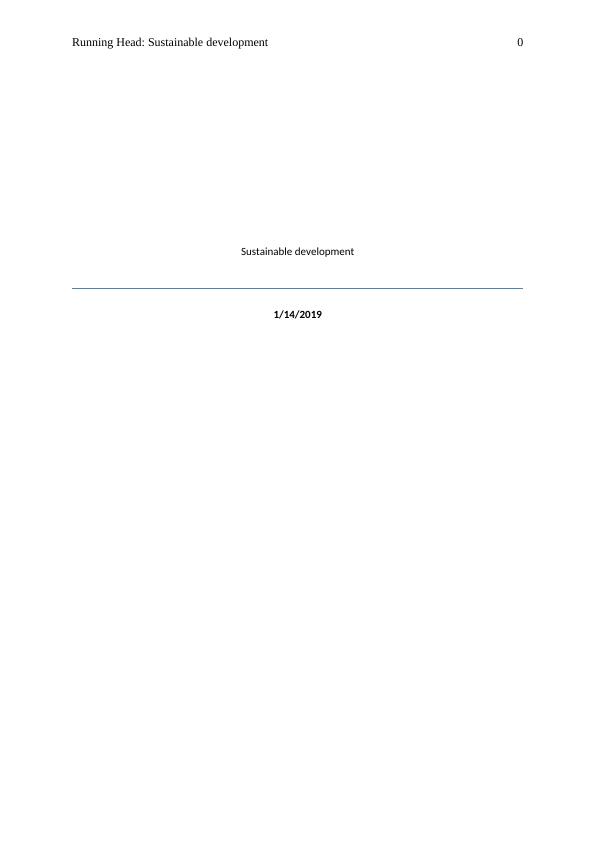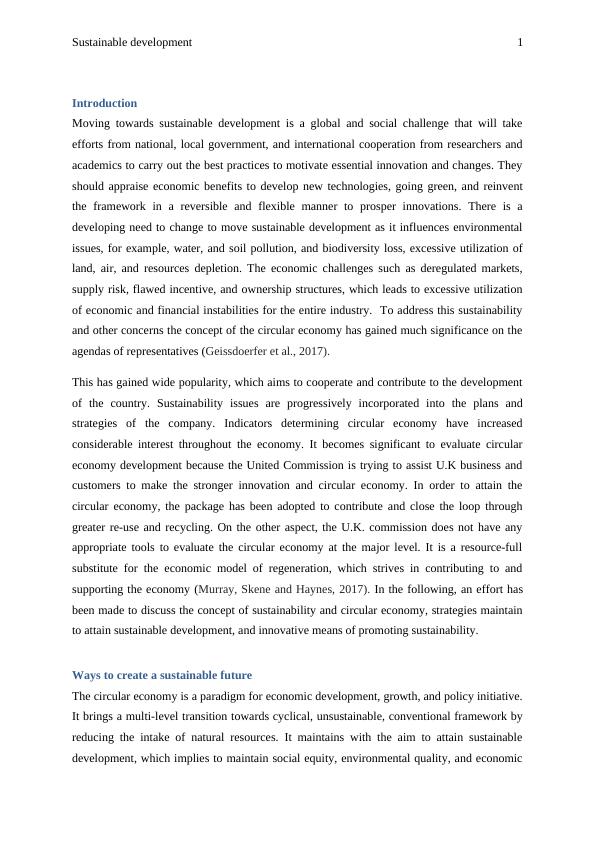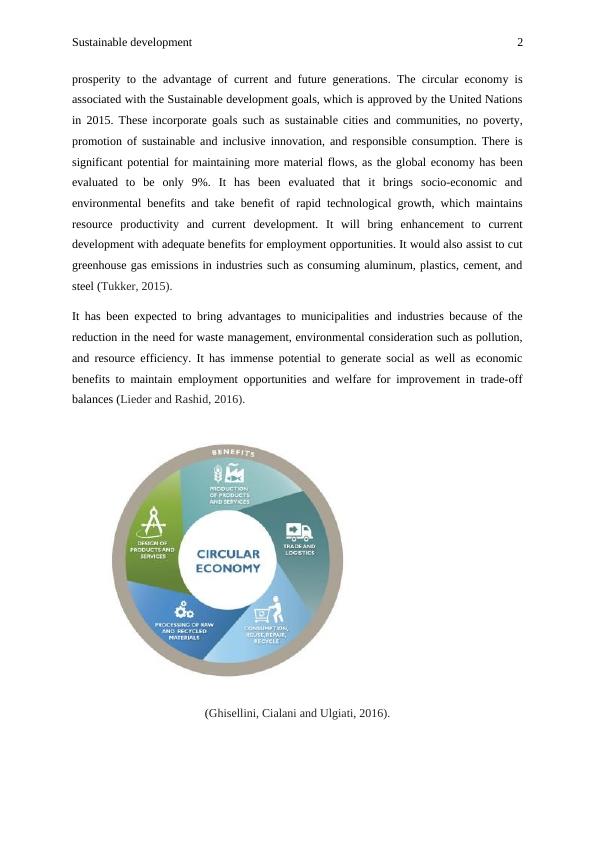Strategies for Sustainable Development in Circular Economy
This coursework is a summative assignment for the Sustainable Development module (ENGT5115) in the Faculty of Technology. It assesses the learning outcomes related to critical appreciation and awareness of sustainable development, critical appraisal skills, knowledge of SD strategy, ability to apply information and ideas, and communication skills. The coursework can be done individually or in a group, and it constitutes 70% of the overall module mark. The due date for submission is 23.01.2019, 23.59 hrs UK time.
Added on 2023-04-21
About This Document
Strategies for Sustainable Development in Circular Economy
This coursework is a summative assignment for the Sustainable Development module (ENGT5115) in the Faculty of Technology. It assesses the learning outcomes related to critical appreciation and awareness of sustainable development, critical appraisal skills, knowledge of SD strategy, ability to apply information and ideas, and communication skills. The coursework can be done individually or in a group, and it constitutes 70% of the overall module mark. The due date for submission is 23.01.2019, 23.59 hrs UK time.
Added on 2023-04-21
End of preview
Want to access all the pages? Upload your documents or become a member.




